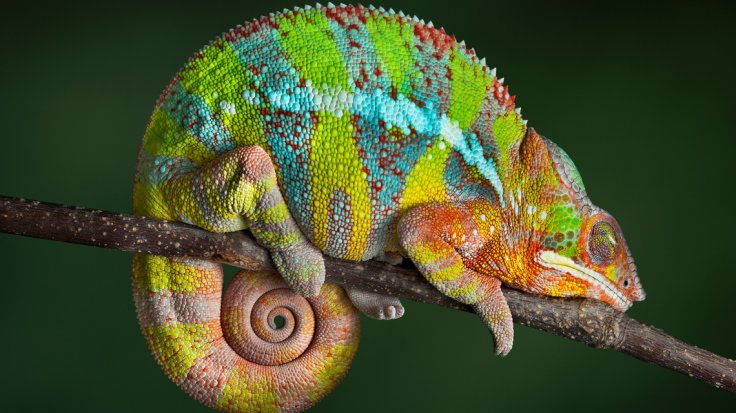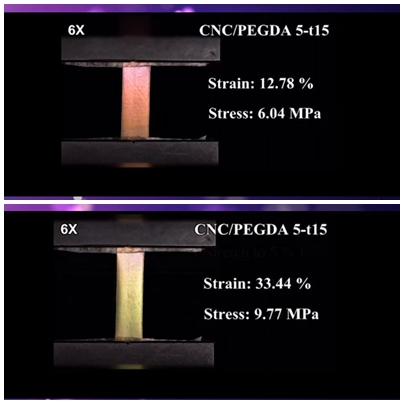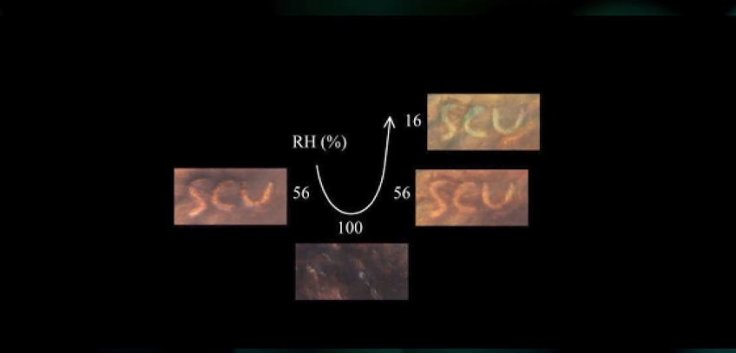Chameleons are one of nature's most marvelous creatures. With their ability to change colors at will and camouflage with their surroundings, these reptilians have fascinated man enough to want to replicate its color-changing ability. Now, researchers have managed to engineer a flexible film that can color in response to pressure, humidity and stretching.
"The soft materials show humidity- and compression-responsive properties in terms of changing apparent structural colors," the authors wrote in the study, which was published in the journal ACS Applied Materials & Interfaces.
Changing Colors At Will

Chameleons change colors through the relaxation or tensing of the skins, where the light is reflected by guanine crystals found under the surface of the skin, and a process known as structural coloration takes place. Structural coloration is the production of color by structure surfaces that are microscopically minute enough to hinder visible light, sometimes with aid of pigments.
Unlike color from pigments that provide numerous creatures their hues, structural colors are different. While scientists have managed to replicate the crystalline nanostructures found in chameleon skin within numerous color-changing materials, they are difficult to manufacture or depend on petroleum resources that are non-renewable.

In contrast to these materials, cellulose nanocrystals act as renewable materials that can assemble into a film on their own with iridescent structural colors. Nevertheless, the films are usually delicates and cannot be stretched without snapping. Therefore, the scientists decided to develop a film composed of cellulose nanocrystals that is extremely flexible and changes color upon being stretched.
Replicating the Chameleon's Color-changing Ability
For the development of such a film, the scientists added a polymer known as Poly(ethylene glycol) diacrylate (PEGDA). UV light was used to enable the cross-linking of the two materials that lead to the formation of rod-shaped nanocrystals. This produced films with vivid iridescent colors that ranged from red to blue, based on the amount of PEGDA added.

These films were flexible and strong and were able to expand up to 39 percent of their original length before fracturing. As it was stretched, the color of one of the films eventually changed from red to green. After it was relaxed, it returned to its original color.
The scientist claim that the result of the study is the first time that expansion and relaxation-led, reversible structural color changes that can be viewed by the naked eyes, has been accomplished using cellulose nanocrystal materials. Also, the film was able to change color with humidity and pressure, which permitted the authors to present and hide writings made using an inkless pen. According to the authors, the new material could find use in encryption and anti-counterfeiting measures, among others.









